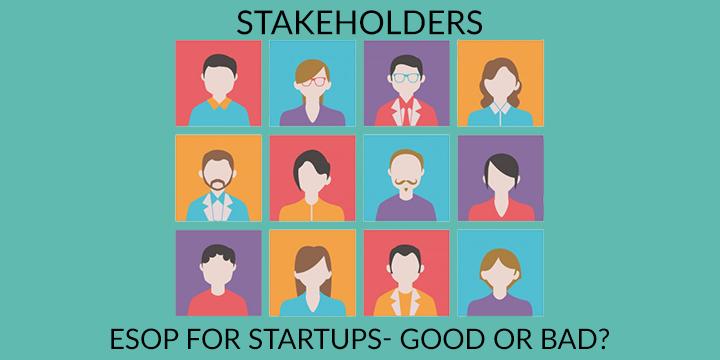In an ideal world, the sales and marketing teams are meant to be the best friends supporting each other through the thick and thin. Nevertheless, in the real world, sales and marketing are like oil and water. The two business segments don’t get along well and work individually without each other’s consultation. This diverse and disconnected attitude and approach in the road to revenue generation is a recipe for disaster for the business. The reality is, the sales and marketing teams must work together to achieve the common target of revenue generation. ‘Smarketing’ – The Integration of the Sales and Marketing is the key strategy to bring both the business segments on the same page. Go ahead and dig deep into this new concept which is a necessary game plan.

Even today, many business organisations have sales and marketing teams working individually and leading to hundreds of escalations and customer problems. Even though both the teams share the common objective of augmenting the business profits, the endless arguments and blame-game continue to be challenging for the business operations. ‘Why should we adopt and implement the integration of sales and marketing?’ – This is the most common question among the business strategists, sales, and marketing professionals.
Get MBA Certifications from the World’s top Universities. Earn Masters, Executive PGP, or Advanced Certificate Programs to fast-track your career.
What’s Smarketing?
Smarketing is a modern business strategy where the two business functions, sales, and marketing, work as a single team, with a common objective. In this methodology of business operations, the journey of marketing continuous beyond the traditional areas such as market penetration, building brand identity and generating lead opportunities. Now, the marketing teams also have to offer assistance to the sales practitioners, and in return, the sales team must offer the necessary assistance to nurture the generated leads. An enhanced dynamic relationship exists between both the teams and acts coherently in nature.
Must-have Skills at Different Stages of a Sales Career
In the real business ecosystem, the sales team is dependent on the marketing team for the sales leads and marketing team can improve its value from the field data offered by the sales team. According to a 2011 report by Aberdeen Research, companies that are best-in-class at integrating marketing and sales experienced an average of 32% growth in annual revenue, compared to a 7% decline among their less aligned competitors. Integration means several things: emerging shared definitions, mutual goals, and metrics, and engaging smart technologies and modernised processes.
Smarketing Strategy – An Asset to the Business
When the marketing team shares the buyer insights and personas with sales, it helps them to more effectively tailor an approach to the lead. The more personalised the sales approach, the more likely the lead is to convert and also become a long-term, loyal customer. If sales team shares the right data and customer details with the marketing team increase the conversion rate. Besides this, the integration of sales and marketing can decrease customer confusion leading to disappointments. This business integration gives a clear picture of the target personas and helps to lead the marketing and sales process flow smoothly. A unified credible message from both the sales and marketing team builds the right credibility and trust of the audience. The simplification of tracking and budgeting the teams increases operational efficiency. In short, this helps the sales and marketing professionals to sail on the same boat and reach the same destination with clearer data and refined goals.

Even though the business organisation knows the visible and the vast impact of the integration of the sales and marketing in the business, the cultural attitude and the fear of gossip is one of the biggest barriers in implementing this strategy. The thin line between the sales and marketing team is the biggest wall that separates the business segments and seeds the eternal historic sales-marketing turf war. The business environment continues to view sales and marketing as separate departments of different worlds, interests, and goals. The attitude of discouraging the merger of sales and marketing and to work hand-in-hand is the major block at the heart of the business.
Sales 101: An Optimum Approach to Find a Happy Customer
The digital world has grown like never before. And it’s time for business organisations, whether it is a startup or an established firm, to build and implement an integrated sales and marketing strategy and put the best foot forward.
The Path of Implementing Smarketing
The journey of integrating of sales and marketing business segment is not about making the teams talk to each other or making them sit in the same workspace. It is about creating an open and transparent atmosphere between the sales and marketing team with respect to data, strategy, success and failures of both the segments. Ensuring all the data are collated and viewed cohesively for the benefits of both the slices of the business. This data shall ensure the business builds the right strategy and offers the appropriate solutions with respect to its competitors.
Key strategies to promote the implementation of Smarketing:
#1 Clarity of Shared Objectives
The first step is to get sales and marketing teams in agreement about who the target audiences are and their pain points focused on product solutions. Once buyer personas are determined, marketing and sales team should comply with specific and quantitative descriptions of a lead: How does each team define a qualified lead? Co-creating these characterisations of business terms helps both the teams to tag along with each other and stay sane, eliminating complaints and accusations down the road about “bad” leads.
#2 Promoting Open Sales and Marketing Communication
Encouraging transparent and consistent communication between the sales and marketing teams is sowing the fertile seeds today, for the fruitful future of the business. The weekly and monthly open discussions of the sales team to share the field feedback to the marketing team will help to understand the current process and the structure of the sales. It could also help them to analyse their strategies which have led to successful potential leads for the business. On the other hand, allow the marketing personnel to participate in the sales calls and take the necessary benefits from the marketing expertise to close the deals. This will help both the teams to view the same picture and also realise that they are fighting the same battle.
Building Strong and Steady Professional Relationships
#3 Smarketing Team Meetings
Plan, organise and schedule a joint Smarketing weekly/monthly/quarterly meetings for both the sales and marketing team together. Appreciate, reward and celebrate the combined efforts of both the team. Such meetings and business structure will help the entire organisation to accept and appreciate the new model of integration of sales and marketing.

#4 Let them Stay Accountable
Once the collaborative nature of work is set up and the process is streamlined, encourage both the teams to share and discuss the issues and challenges together. Ensure marketing is accountable for quantity and quality of leads and sales is questioned for the accurate leads generated through marketing initiatives. Sales must be vigilant and work steadily to ensure that the marketing initiatives do not go into the gutter. Strengthen the team to discuss their failures and frustrations in a constructive fashion substantiated with appropriate data. These data-driven discussions will help them to stay accountable for their actions and analyse the same for the better business action plan in the future.
#5 Developing and Implementing a SMARKETING Agreement
The best method to hold both the teams accountable while implementing a SMARKETING process is to develop and deploy a Smarketing Service Level Agreement (SLA). This is an agreement between the sales and the marketing team, where the marketing professionals will agree upon delivering a certain number of leads at a certain quality for the sales team. The sales team is authorised to nurture those specific leads and increase the number of customers for the business. Both the teams can track the SLA and work according to the requirements. This agreement will ensure that the typical blame-game between sales and marketing is diluted with time. A well though SLA’s would generate higher quality leads.
Understanding and Conducting a Market Research like Experts
#6 Offering Rotation of Jobs
Yes! In the real world, this might not be agreeable. But, ensuring both the sales and marketing teams wear each other’s shoes at regular intervals, would help them to acknowledge each other’s problems. This will also help them to understand the process funnel and appreciate the work around them. Reaching an understanding by speaking the same language with both the teams is essential while understanding each other’s glitches and ensuring the customer is the focus.
#7 Monitoring and Metrics
When we say, ‘integration’, it is not a one-time procedure. It is a continuous ongoing process until the existence of the business. A constant monitoring and tracking of the performance of the marketing initiatives and sales strategies with shared and accurate metrics and data are essential for the successful integration of the smarketing. A teamwork with different ideas and collaborative efforts is vital.
While there might be very few organisations that are successful in implementing and reaping benefits through this model, market studies have revealed that this is the way to go. A consistent process along with uniform and shared strategy is the way forward for the business to flourish. A business firm can work for keeping, marketing and sales team separately up to certain level. In order to scale up and reach the next mark of success and retain the victory, a technology-enabled smarketing model is a way to take a big breakthrough in the business.
Role of technology in Smarketing:
- In order to align the sales and marketing team and have the same wavelength, both the teams must attend the business meetings regularly and have a shared content creation process in place and coordinate the campaigns with each other. The new technologies like Jira, Slack, and SharePoint aid in the collaboration of these functions.
- Customer Relationship Management (CRM) and marketing software such as Marketo, HubSpot, MailChimp, Salesforce, etc., will help to develop and deploy a unified, explicit and clear smarketing strategy.
- Integrated platforms like Salesforce, LeadSquared, HubSpot, Infusionsoft, etc., are one-stop virtual space for many sales and marketing activities. These tools are the sources to support to qualify leads built on demographics and behavioural data and inputs from the sales team. This will also ensure optimising the productivity of the teams and identify their most quality lead at a glance.
- The integration of sales and marketing software’s and bringing them into single platform would benefit both the sides and improve the results based on data. It will also help to ensure that the customer remains the focus always. This transparent process validated by data will keep both the teams on track.
Creating a happy, open, friendly and honest environment for the team members is an important task of the business leads and managers to achieve the business goals. Smarketing is a way to build an open and trustworthy people-friendly ecosystem for the sales and marketing professionals. It is meant to offer the most creative ideas and successful sales strategies and scale up the business at every stage.
A complementary fashion of working style which would enable the professionals to cater to the target audience efficiently and effectively. Whatever said and done, Customer is the King and they are the fuel for every business to exist.
If you want to learn more about marketing and entrepreneurship, Liverpool Business School & upGrad offers Master of Business Administration (MBA) Liverpool Business School which helps you to transform your career. The program provides 1-on-1 mentorship from industry leaders, 1-week immersion program at University campus, dual credentials (MBA from LBS & PGPM from IMT), network with peers at offline basecamps and more.







